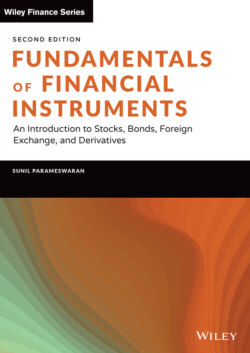Читать книгу Fundamentals of Financial Instruments - Sunil K. Parameswaran - Страница 133
На сайте Литреса книга снята с продажи.
AMORTIZATION SCHEDULES AND EXCEL
ОглавлениеLorraine has taken a loan of $500,000 which has to be paid back in eight annual installments. The interest rate is 4.80% per annum. The periodic installment can be computed using the PMT function in Excel. The parameters are:
Rate
Nper
PV
FV
Type
The values for PV and FV should have opposite signs.
For the first period,
Now consider the second period. There are two ways in which the PMT function can be invoked. We can specify the same set of parameters as for the first period. Or we can specify the Nper as 7, and the PV as the outstanding balance, which is $447,263.34.
Now consider the interest and principal components of each installment. We can use a function in Excel called IPMT to compute the interest component of an installment and another function called PPMT to compute the principal component of the installment. The parameters, for both, are
Rate: This is the periodic interest rate.
Per: This stands for period.
Nper: This represents the total number of periods.
Pv: This is the present value.
Fv: This is the future value.
Type: This has the usual meaning.
Consider the interest and principal components of the first installment.
. While computing the interest component of the second installment, we can invoke IPMT as IPMT(0.048,2,8,–500000) or as IPMT(0.048,1,7,–447263.94). Both will return a value of $21,468.64. Similarly, the principal component of the first installment is . For the second period,
IPMT and PPMT can be used with two sets of parameters. We can keep the total number of periods at the initial value, specify the present value as the initial loan amount, and keep changing Per to compute the interest and principal components. For the first installment, Per = 1, and for the nth installment, it is equal to n. The alternative is to re-amortize the outstanding amount at the beginning of each period over the remaining number of periods. Remember that each time we re-amortize, we are back to the first period. Thus, after every payment, we are back to the first period of a loan whose life is equal to the remaining time to maturity, and whose principal amount is equal to the remaining outstanding balance.
